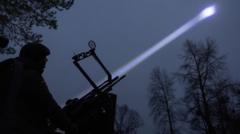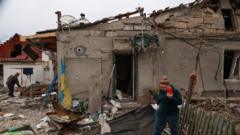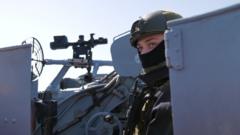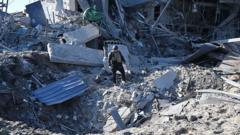Despite sporadic attempts at cessation of hostilities, trust remains elusive between Ukraine and Russia, underscoring the complexity of peace negotiations.
**Ceasefire Efforts in Ukraine: A History of Betrayal and Mistrust**
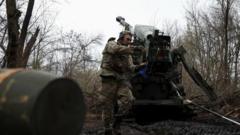
**Ceasefire Efforts in Ukraine: A History of Betrayal and Mistrust**
In an ongoing conflict, attempts at ceasefire agreements reveal a cycle of broken promises and deepening hostilities.
Attempts to establish a ceasefire in Ukraine continue to falter, reinforcing a history riddled with broken agreements and profound mistrust between the two nations. The latest ceasefire, declared by Russian President Vladimir Putin for Easter, lasted a mere 30 hours and was marred by accusations of violations from both sides. Ukrainian President Volodymyr Zelensky suggested a 30-day extension, noting an absence of air raid alerts during the brief truce, but the durability of such agreements remains in question.
Past efforts by the United States to negotiate protracted ceasefires have largely fallen flat, exemplifying the difficulties of achieving even a temporary halt in hostilities. Russia's demands, which include prohibitions on Ukraine's rearmament and recruitment, further complicate negotiations. The legacy of broken ceasefire deals, including 25 violations noted by Zelensky since 2014, has fostered an environment of deep-seated mistrust.
The relationship between Ukraine and Russia deteriorated dramatically after Russia's 2014 annexation of Crimea, breaching a previous agreement wherein both parties committed to respecting territorial integrity. Historical accusations of deceit characterize the conflict, with significant casualties resulting from broken agreements, particularly during the tumultuous early days in Ilovaysk and subsequent ceasefire attempts.
The Minsk agreements, established to resolve hostilities, quickly fell apart upon implementation, with Russian-backed forces continuing to engage in hostilities shortly after these accords were signed. Similarly, other proposed truces—whether around holidays or in the name of humanitarian needs—have met with quick failures, underscoring the challenges inherent in securing lasting peace.
Military and political analysts largely attribute the breakdown of these efforts to insincere negotiation tactics from the Russian side, coupled with ongoing military threats, which complicate Ukraine's position. While some responsibility can be shared, significant contention lies in labeling both parties as violators, with evidence pointing to Russia's role as the principal actor undermining ceasefire agreements.
Despite the ongoing calls for negotiations, including recent suggestions from former U.S. officials, the prospects for a robust ceasefire remain grim. Russia’s insistence on addressing "underlying causes of the conflict" signals intentions rooted firmly in undermining Ukrainian sovereignty—a stance initially identified during earlier peace accords.
In the current landscape, where trust remains absent, and both sides gear up for potential escalation, the path toward a sustainable peace appears as elusive as ever.
Past efforts by the United States to negotiate protracted ceasefires have largely fallen flat, exemplifying the difficulties of achieving even a temporary halt in hostilities. Russia's demands, which include prohibitions on Ukraine's rearmament and recruitment, further complicate negotiations. The legacy of broken ceasefire deals, including 25 violations noted by Zelensky since 2014, has fostered an environment of deep-seated mistrust.
The relationship between Ukraine and Russia deteriorated dramatically after Russia's 2014 annexation of Crimea, breaching a previous agreement wherein both parties committed to respecting territorial integrity. Historical accusations of deceit characterize the conflict, with significant casualties resulting from broken agreements, particularly during the tumultuous early days in Ilovaysk and subsequent ceasefire attempts.
The Minsk agreements, established to resolve hostilities, quickly fell apart upon implementation, with Russian-backed forces continuing to engage in hostilities shortly after these accords were signed. Similarly, other proposed truces—whether around holidays or in the name of humanitarian needs—have met with quick failures, underscoring the challenges inherent in securing lasting peace.
Military and political analysts largely attribute the breakdown of these efforts to insincere negotiation tactics from the Russian side, coupled with ongoing military threats, which complicate Ukraine's position. While some responsibility can be shared, significant contention lies in labeling both parties as violators, with evidence pointing to Russia's role as the principal actor undermining ceasefire agreements.
Despite the ongoing calls for negotiations, including recent suggestions from former U.S. officials, the prospects for a robust ceasefire remain grim. Russia’s insistence on addressing "underlying causes of the conflict" signals intentions rooted firmly in undermining Ukrainian sovereignty—a stance initially identified during earlier peace accords.
In the current landscape, where trust remains absent, and both sides gear up for potential escalation, the path toward a sustainable peace appears as elusive as ever.


